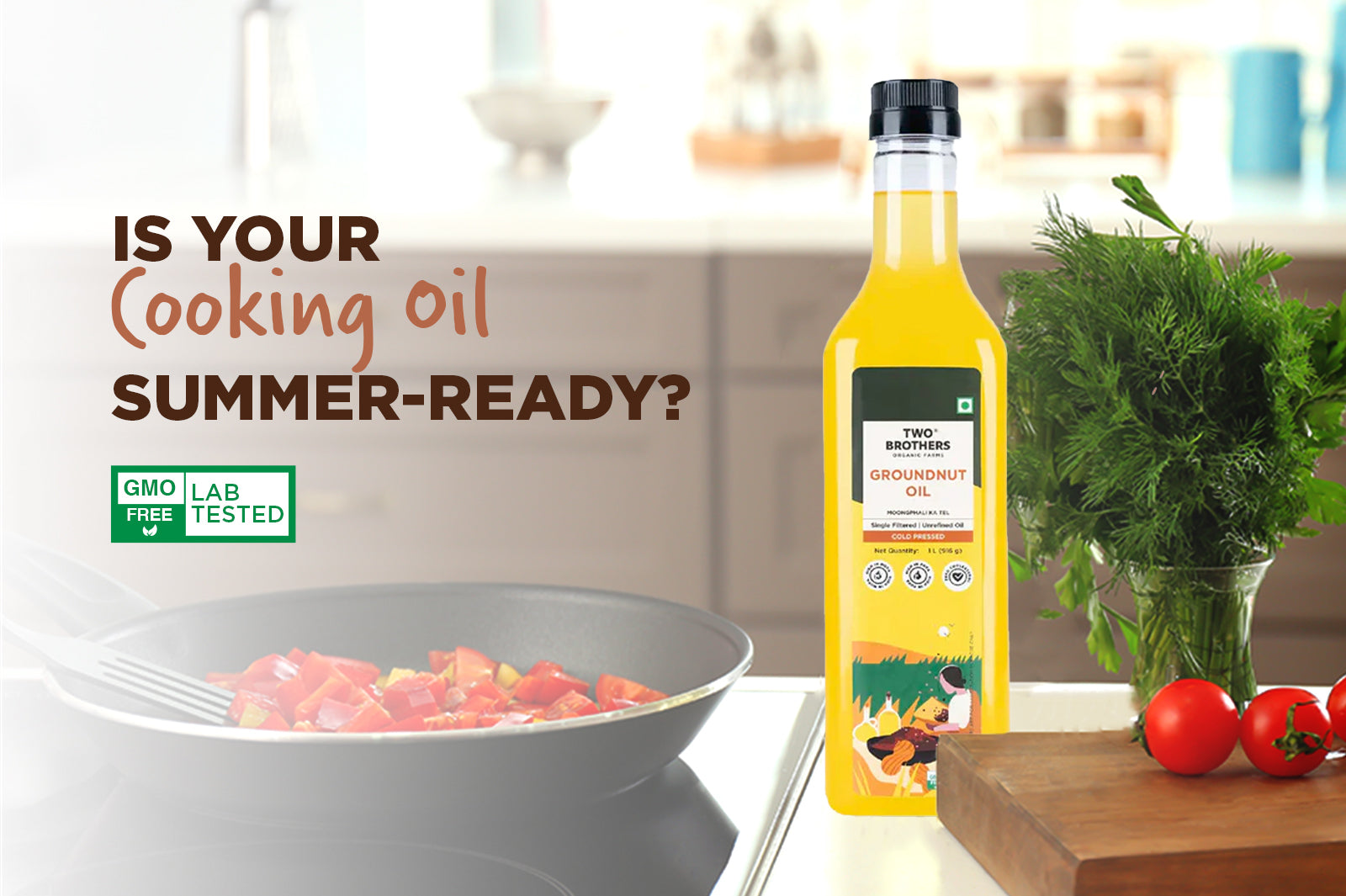For many of us in India, the day doesn’t start or end without a fresh, warm roti. But what if your everyday atta (wheat flour) is silently causing digestive distress—bloating, heaviness, or that uncomfortable ‘stuffed’ feeling after meals?
If you’re experiencing bloating regularly after eating rotis or chapatis, the atta you’re using could be the culprit. Thankfully, you don’t need to give up your beloved rotis. There’s a low-gluten alternative that’s healthier, tastier, and easier on the stomach—Khapli Atta, especially from trusted sources like Two Brothers Organic Farms.
Let’s explore what causes bloating, the role of gluten, and how switching to Gluten-free or low-gluten atta like Khapli wheat flour could bring much-needed relief.
What is Bloating?
Bloating is a common digestive issue where your stomach feels swollen or tight, often due to gas or indigestion. It can make you feel uncomfortable, full even when you haven’t overeaten, and in some cases, lead to abdominal pain.
While occasional bloating is normal, persistent bloating after meals—especially after consuming foods like wheat—can signal an intolerance or sensitivity, particularly to gluten.
Read also- Why Khapli Atta is Better for Diabetics Than Regular Wheat Flour (usage-based, benefit: low GI)
Can Atta (Whole Wheat Flour) Cause Bloating?
Yes, for some people, atta can cause bloating. Here's why:
1. High in Fiber
Atta has a lot of fiber, which is generally good for digestion. But if your body is not used to eating high-fiber foods, it can lead to gas and bloating.
2. Contains Gluten
Wheat flour has gluten – a type of protein. Some people are sensitive to gluten or have a condition called gluten intolerance or celiac disease. For them, eating atta can cause bloating, stomach pain, and gas.
3. Fermentation in Gut
When you eat atta, your gut bacteria break it down. In some people, this process produces more gas, which causes bloating.
Who Might Feel More Bloated?
-
People who suddenly eat more chapatis or fibre-rich 0 food
-
People with gluten sensitivity
-
Those who already have digestive issues like IBS (Irritable Bowel Syndrome)
Tips to Avoid Bloating from Atta
-
Start slow – If you're not used to high fiber, increase slowly.
-
Drink more water – Fiber needs water to move smoothly in the gut.
-
Chew well – Digestion begins in your mouth.
-
Try different flour – Use bajra, jowar, or ragi if atta doesn’t suit you.
-
Soak the dough – Letting atta dough rest longer can improve digestion.
Read Also - Goodbye Bloating, Hello Digestion: Why Your Gut Loves Khapli Atta
What is gluten
When it comes to atta or wheat flour, gluten—the protein found in wheat—is often to blame. For some people, their digestive systems struggle to process gluten efficiently, leading to gas, bloating, and discomfort.
Gluten is a type of protein naturally found in wheat, barley, and rye. It acts like a binding agent or glue, helping dough hold its shape and giving bread and rotis their chewy texture.
When you mix wheat flour with water and knead it, gluten proteins form a stretchy network. This network traps air bubbles, allowing baked goods to rise and become soft and fluffy.
What is Gluten-Free Atta?
Gluten-free atta refers to flour that does not contain gluten—the sticky protein found in wheat, barley, and rye. Gluten helps give bread and roti their chewiness, but it’s also a common irritant for many.
Some gluten-free flours are completely grain-free (like almond or coconut flour), but for Indian meals, we often look for flours that make soft, pliable rotis. That’s where Khapli wheat flour stands out—it’s not entirely gluten-free but has much lower gluten content compared to regular wheat, making it a gentler, gut-friendly alternative.
You can Buy Gluten-Free Khapli Atta easily online today, with brands like Two Brothers Organic Farms offering high-quality, stone-ground options rich in nutrition.
Read Also - Khapli Wheat Flour vs. Regular Wheat Flour: Which is Better?
Benefits of Gluten-Free and Low-Gluten Atta
Switching to gluten-free or low-gluten atta like Khapli Atta can have surprising health benefits, especially for those with gut sensitivities. Here's how it helps:
1. Eases Digestive Discomfort
Low-gluten atta is gentler on the stomach. If you’ve experienced bloating or heaviness after eating regular wheat rotis, a switch to Best Khapli Atta may ease symptoms almost immediately.
2. Reduces Inflammation
Gluten sensitivity is linked with increased inflammation in the gut lining. By reducing gluten intake, your body gets a chance to heal, leading to reduced bloating, fatigue, and joint pain.
3. Helps Maintain Weight
Low-gluten flours like Khapli have a lower glycemic index, which means they release energy slowly, help control hunger pangs, and prevent blood sugar spikes.
4. Supports Better Gut Health
Khapli wheat is an ancient grain rich in fiber, antioxidants, and micronutrients that nurture gut flora and improve digestion naturally.
What Are Low-Gluten Alternatives to Regular Atta?
If you’re not looking to go fully gluten-free but want to reduce your gluten intake, here are some excellent low-gluten Indian flours to consider:
1. Khapli (Emmer) Wheat Atta
This ancient grain is packed with fiber, protein, and essential minerals. It has much less gluten than modern wheat and is slow-digesting, making it perfect for diabetics and weight watchers.
Recommended Product:
✅ Best Khapli Atta by Two Brothers Organic Farms
2. Jowar Flour (Sorghum)
Completely gluten-free, jowar is rich in iron, fiber, and antioxidants. It can be slightly tricky to roll into rotis but is great when mixed with other flours.
3. Bajra Flour (Pearl Millet)
Nutty in taste and great for winters, bajra is gluten-free and rich in magnesium and fiber.
4. Ragi Flour (Finger Millet)
Packed with calcium and protein, ragi is another gluten-free grain loved in southern India.
But when it comes to taste, texture, and ease of making rotis, Khapli Atta hits the sweet spot for most Indian households.
Read Also - Khapli Wheat vs. Ragi: Which is Better for Diabetics?
Why We Recommend Two Brothers India’s Khapli Atta
When choosing gluten-free or low-gluten alternatives, quality matters. Many commercial flours are over-processed or adulterated, which affects both their nutritional profile and digestibility.
Two Brothers Organic Farms offers stone-ground, organic Khapli wheat flour grown without chemicals or synthetic pesticides. Their Khapli Atta is:
-
100% natural
-
Hand-harvested and slow-ground
-
Rich in dietary fiber and minerals
-
Free from preservatives or artificial enhancers
Plus, it’s grown using traditional Indian farming practices that nourish the soil and your body.
👉 Buy Gluten-Free Khapli Atta Online from Two Brothers India
FAQs About Bloating and Gluten-Free Atta
1. Can regular atta cause bloating even if I’m not gluten intolerant?
Yes. Even without full-blown gluten intolerance, many people have a sensitivity that causes bloating, fatigue, or gas. Switching to a low-gluten flour like Khapli often helps.
2. Is Khapli wheat the same as regular wheat?
No. Khapli (Emmer) is an ancient variety of wheat with a lower gluten content and higher nutritional value. It’s not genetically modified and is easier to digest.
3. Are Khapli rotis soft and easy to make?
Absolutely. Khapli Atta makes soft, tasty rotis similar to your regular ones. It's perfect for everyday meals.
4. Where can I buy Khapli Atta online?
You can Buy Khapli Atta from trusted sources like Two Brothers Organic Farms here.
5. Is Khapli wheat safe for diabetics?
Yes. Khapli wheat is a better choice for blood sugar management due to its low glycemic index and high fibre content.
Conclusion:
If bloating has become a regular visitor after meals, it’s time to reconsider what’s on your plate—starting with your atta. Modern wheat, with its high-gluten content, may not suit everyone. But that doesn’t mean you have to give up your daily rotis.
Khapli Atta, with its low gluten and high nutrition profile, offers a wholesome, gut-friendly alternative that your stomach will thank you for.
Switch to a better grain. Go back to your roots.
Try Gluten-free Khapli Atta from Two Brothers Organic Farms—and bring comfort back to your meals.













